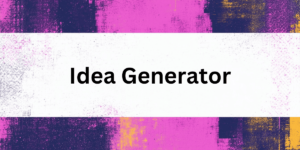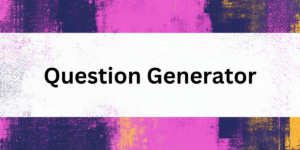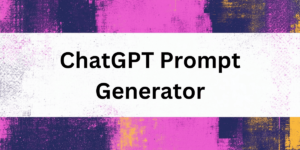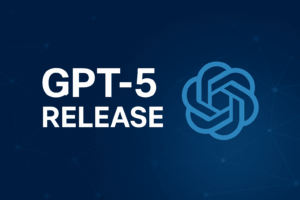In the digital age where businesses are expected to do more with less, small to medium-sized enterprises especially feel the crunch. The need for innovation and cutting-edge strategies to improve performance is essential in the fight for market share, customer engagement, and brand loyalty. This has placed a spotlight on AI-driven performance management tools, which have emerged as a beacon of hope for time-strapped and resource-limited businesses. This guide is meant as a resource for organizations eager to overcome the complexities of today’s marketing milieu. As you explore our in-depth analysis, you’ll uncover the transformative power of AI tools designed to elevate productivity, refine performance strategies, and carve out a sustainable path to growth – all without stretching your budget.
Summary
- 💡AI-driven performance management tools are revolutionizing how businesses analyze and improve performance by leveraging machine learning, natural language processing, and predictive analytics for real-time monitoring, feedback generation, and goal setting.
- 💡The top performance management tools with AI features offer deep analytical capabilities, real-time feedback and coaching, predictive performance modeling, seamless integration with existing systems, and user-friendly interfaces.
- 💡AI enhances traditional performance management by providing personalized feedback, continuous performance evaluation, objective performance insights, predictive analytics for proactive improvement, enhanced goal setting, and streamlining administrative tasks.
- 💡Successful deployment of AI-based performance management tools involves starting with clear objectives, ensuring data quality, focusing on user adoption, fostering a culture of trust, iterating and improving, partnering with reputable providers, and measuring impact.
- 💡Future trends in AI performance management include hyper-personalized performance insights, predictive analytics and prescriptive actions, integration with augmented and virtual reality, enhanced emotional and social intelligence, a focus on ethics, privacy, and transparency, and the creation of continuous learning ecosystems.
Introduction to the Best AI-Driven Performance Management Software for 2024
Forward-thinking companies are always on the hunt for methods to bolster their content strategy. An AI chatbot for companies might just be the breakthrough that propels your marketing efforts forward. Our journey into AI-driven performance management software for 2024 kicks off by exploring the transformative impact these technologies have on reshaping how businesses tackle performance analysis and enhancement.

AI-driven performance management software is engineered to automate and improve various facets of performance assessment, from real-time monitoring to comprehensive analytics, feedback generation, and goal-setting. These tools utilize machine learning, natural language processing, and predictive analytics to equip businesses with insights that were once beyond reach with conventional approaches. They go beyond merely tracking metrics to unraveling the narrative behind the numbers, providing a comprehensive view of an organization’s operational efficiency and employee productivity.
The allure of AI-driven performance management software is in its capacity to adapt and evolve from the data it analyzes, constantly refining its algorithms to better meet the changing demands of businesses. This means they can become increasingly accurate and efficient over time, offering companies a dynamic solution that grows with them.
List of the Top Performance Management Software with AI Features for Enhanced Employee Engagement
Incorporating AI into performance management allows companies to benefit from personalized feedback loops, predictive performance trends, and actionable insights that enable employees to thrive in their roles and support effective employee rewards and recognition. These tools streamline the process of pinpointing performance gaps, establishing realistic and ambitious goals, and devising strategies that play to the strengths of individuals or teams.
Leveraging the right tools can make all the difference in staying ahead of the competition. As we navigate through 2024, several AI-driven performance management software solutions have emerged as game-changers, each offering unique features designed to optimize productivity and performance. Here’s a look at some of the top contenders that are reshaping the landscape of performance management and employee engagement:
1. Lattice:
Lattice combines performance management software with AI-driven insights to help managers and teams set clear goals, offer real-time feedback, and foster professional development. Its predictive analytics can identify potential performance issues before they become problematic, ensuring that employees are always aligned with their goals.
| Pros: | Cons: |
| User-friendly interface and easy to navigate. Allows for continuous feedback and performance tracking. Integrates with other HR tools for a seamless experience. Offers customizable goal-setting and performance review features. | Can be expensive for small companies with limited budgets. Some users may find the reporting and analytics capabilities lacking. Limited customization options for certain features. |
2. BetterWorks:
BetterWorks employs machine learning to facilitate goal setting and tracking, making it easier for teams to align their efforts with the company’s strategic objectives. Its AI capabilities offer personalized recommendations for improving performance, helping employees work towards their best performance.
| Pros: | Cons: |
| Robust goal-setting and tracking tools. Encourages regular check-ins and feedback between employees and managers. Offers performance analytics and insights to drive data-informed decisions. Integrates with popular collaboration tools like Slack and Salesforce. | May have a steeper learning curve for new users. Pricing may be prohibitive for smaller organizations. Some users report occasional technical glitches and performance issues. |
3. Reflektive:
Reflektive integrates real-time feedback with performance analytics, allowing for a more dynamic and responsive approach to employee development. Its AI-driven insights help tailor development plans to individual employee needs, enhancing the employee engagement process.
| Pros: | Cons: |
| Focuses on real-time feedback and recognition. Customizable performance review templates and processes. Offers AI-driven insights for personalized development plans. Supports integration with popular HR and communication tools. | Limited flexibility in certain features compared to other platforms. Some users find the interface to be less intuitive than other options. Pricing may not be suitable for smaller businesses. |
4. 15Five:
15Five uses AI to streamline the feedback process, making it more efficient and effective. It offers insights into employee sentiment and productivity trends, enabling managers to make informed decisions about team dynamics and individual performance, thus improving the overall team’s work quality.
| Pros: | Cons: |
| Promotes a culture of continuous feedback and employee engagement. Allows for customizable pulse surveys and check-ins. Features robust reporting and analytics to track performance trends. Integrates with various HR and project management tools. | Some users may find the interface to be overwhelming. Pricing may be higher than similar tools in the market. Limited customization options for certain features may be a drawback for specific needs. |
5. Peakon:
Peakon leverages advanced AI to analyze employee feedback in real-time, offering actionable insights into workforce engagement and satisfaction. Its predictive analytics can forecast potential turnover risks and pinpoint areas for improvement, helping managers retain their best employees.
| Pros: | Cons: |
| Focuses on employee engagement and sentiment analysis. Provides actionable insights to improve team performance and morale. Offers customizable surveys and feedback mechanisms. Integrates with popular HRIS and collaboration tools. | Users report that the platform can be complex to set up and use. Limited options for customization compared to other tools. Pricing may not be suitable for smaller organizations with limited budgets. |
It’s important to note that the pros and cons listed above are based on general feedback and user experiences. Different organizations may have varying needs and preferences when it comes to performance management tools, so it’s essential to consider individual requirements before choosing a specific platform.
6. factoHR:
factoHR integrates employee performance management with advanced analytics and automation, empowering organizations to optimize workforce productivity. Its seamless payroll integration, data-driven insights, and customizable features enable businesses to simplify HR processes and focus on strategic growth. factoHR ensures compliance with labor laws while promoting a culture of transparency and efficiency.
| Pros: | Cons: |
User-friendly interface simplifies navigation and task management. Offers robust tools for goal setting, feedback, and reviews, supporting a performance-driven culture. Supports automation of repetitive HR tasks for better efficiency. Offers robust analytics to inform strategic decision-making. | Pricing may be high for small businesses with limited budgets. Some users might find certain advanced features overwhelming initially. Limited customization in niche requirements compared to competitors. |
7. PerformanceFlash: Your Performance Management Tool for Engagement and Retention Insights
With PerformanceFlash, neuroflash offers a powerful tool that empowers users to have their texts meticulously examined and assessed based on pre-defined criteria within a comprehensive matrix. This innovative feature enables individuals to craft compelling content with precision and purpose, ensuring the desired impact and resonance of each message. By leveraging this cutting-edge solution, users can elevate their communication efforts by strategically aligning text composition with specific objectives, ultimately enhancing effectiveness and relevance in engaging audiences. Learn how does it work reading this article.

These tools represent just a fraction of what’s available in the market, but they highlight the incredible potential of AI to transform traditional performance management processes. By harnessing the power of AI, businesses can not only streamline their operations but also create a more engaging, motivating, and productive work environment for their employees, ensuring their teams are working towards the same goals and achieving their best performance.
How PerformanceFlash Enhances Traditional Performance Management Processes:
In the realm of employee performance management, the introduction of AI is not just an upgrade; it’s a revolution. Traditional methods, often criticized for being too subjective, infrequent, and backward-looking, are being transformed by AI’s predictive insights, real-time analytics, and personalized feedback. Let’s explore how AI is enhancing traditional performance management processes, making them more dynamic, precise, and impactful for the best development and engagement of employees.

✅ Personalized Feedback and Development for Enhanced Employee Performance
AI elevates the feedback process from generic to highly personalized. By analyzing vast amounts of performance data, AI can identify specific areas where each employee excels or needs improvement. This tailored approach ensures that feedback is relevant and actionable, fostering personal and professional growth, and helping in the development of employees towards their performance goals. Use PerformanceFlash to get real-time feedback on how well your content will activate emotions and implicit association in the mind of your consumers.
✅ Continuous Performance Evaluation for Real-Time Employee Engagement
Gone are the days of annual performance reviews. AI enables a shift towards continuous performance evaluation, offering real-time insights into employee performance. This ongoing assessment allows for immediate recognition of achievements and swift intervention when performance dips, keeping employees on track towards their goals and enhancing overall team engagement.
✅ Objective Performance Insights for Fair Employee Reviews
AI algorithms are designed to eliminate human bias, providing an objective analysis of performance based on data. This impartiality ensures that performance evaluations are fair and based on concrete metrics rather than subjective perceptions, which can often be influenced by unconscious biases, resulting in more accurate and fair employee reviews.
✅ Predictive Analytics for Proactive Employee Development
AI doesn’t just analyze past performance; it predicts future trends. This predictive capability allows managers to proactively address potential performance issues before they become problematic. By forecasting performance trajectories, AI helps in strategizing interventions and support tailored to individual employee needs, thus aiding in their development.
✅ Enhanced Goal Setting with AI for Employee Performance
AI’s data-driven insights support smarter goal setting. By understanding an employee’s past performance and learning curve, AI tools can suggest realistic and challenging goals. This personalized goal setting motivates employees by providing them with attainable, yet ambitious, targets, thereby helping them work effectively towards their performance goals.
✅ Streamlining Administrative Tasks to Focus on Employee Development
AI automates many of the time-consuming administrative tasks associated with performance management, such as data collection, analysis, and report generation. This automation frees up managers’ time to focus on strategy and employee development, rather than getting bogged down by paperwork, ultimately enhancing the performance review process.
AI is not just enhancing traditional performance management processes; it’s redefining them. By offering personalized feedback, continuous evaluation, objective insights, predictive analytics, enhanced goal setting, and streamlined administrative tasks, AI is setting a new standard in performance management software. As we move forward, the integration of AI in performance management processes promises not only to improve efficiency and objectivity but also to significantly impact overall organizational performance and employee satisfaction, making it a crucial tool for managers aiming to enhance team engagement and work quality.
Step-by-step guide to boost your texts with PerformanceFlash:
1.Defining your goals and text type
Begin by choosing the specific text type that aligns with your content strategy. Define a relevant topic and outline the goals you aim to accomplish through your text. This initial step sets the foundation for leveraging PerformanceFlash to enhance your content creation process effectively. After generation, the text suggestions are sorted according to the Flash Score for a better overview. As soon as you have selected texts, they are added to the rating overview and then sorted from high to low depending on the rating.

2. Text suggestions suitable for your audience and goals
PerformanceFlash creates suitable short text suggestions to easlity improve your content performance: Elevate the quality of your content to new heights with our expertly honed suggestions that are guaranteed to captivate and engage your audience effortlessly each time. With PerformanceFlash by your side, rest assured that your message will not only be heard but truly felt by those who encounter it.

3. Analying text with Flash Score
Compare each text suggestion with our Flash Score and analyze the impact of your campaign before launch. The AI analyzes the texts and shows which possible emotions & associations they evoke in readers: As a third step in utilizing PerformanceFlash to enhance your content performance, the AI platform conducts a thorough analysis of your texts. It identifies the range of emotions and implicit associations evoked in readers, providing valuable insights to optimize the impact and engagement of your content.
4. Custom and optimize your texts
Texts improved with just one click to customize your messages: Finally, with just one click, you can seamlessly enhance your texts to tailor and refine your message based on the insights gathered through PerformanceFlash analysis, Flash Score. This streamlined process empowers you to optimize your content effortlessly for maximum effectiveness.

How Flash Score calculates the rating:
The Flash Score is a prediction of the proposed text’s chances of success. It is based on your selected target group and your settings in the target window regarding the values and messages that the text should convey.
These crucial elements guide the overarching tone and messaging that your text aims to convey. By delving into sentiments, associations, and detailed descriptions of your intended demographic, each factor contributes uniquely to a holistic assessment. Through careful analysis of these distinct variables, we meticulously gauge their impact on crafting compelling copy that resonates effectively with your audience. The culmination of this meticulous process culminates in our proprietary Flash Score algorithm; a quantitative measure derived from these core values – enabling us to refine and enhance textual output in alignment with strategic objectives.

Understanding the score of Performance Management Tools Rates
When it comes to tools like Flash Score, which provide real-time sports scores and updates, interpreting the score and determining its effectiveness is crucial for making informed decisions. By delving into the intricacies of performance management tool rates, companies can gain insights into how well Flash Score is performing in terms of accuracy, speed, user interface, and overall reliability.

Use Cases of best Performance Management Tools: PerformanceFlash
PerformanceFlash can be used for a wide variety of text types. From product descriptions to complicated blog articles or even love letters. The applications are almost unlimited. The right text type should match your individual use case.
❇️ Email marketing: Make the first impression count
Often the subject line is decisive for whether an email is opened or not. We support you in optimizing subject lines and email content so that your messages are not only noticed, but also read and acted upon. Increase your open rates and conversions with PerformanceFlash – it’s easier than you think.
❇️Blog content: Engage with every word
Your blog is the voice of your business – let’s make it louder together. We’ll show you how to refine the titles and content of your blog posts so that your readers’ curiosity is piqued and they stay with you. Increase your click-through rates and reader retention with targeted revisions and creative content strategies.
❇️E-commerce: Where product descriptions sell
The way you describe your products can make the difference between a prospect and a buyer. With PerformanceFlash, you can create product descriptions that inform and persuade. Improve your online sales and customer experience with meaningful product copy.
❇️Ad texts: Catch targeted eyeballs
Ads are the flagship of your business online. It’s crucial that these texts are crisp and encourage people to click. We help you optimize your ad copy for different platforms to get the highest click-through and conversion rate.
❇️Website texts: Captivate at first glance
Your website is often the first point of contact for potential customers. Our mission is to optimize your website copy so that it not only informs, but captivates. Improve the user experience and keep your visitors’ attention with clear, appealing and understandable texts.
❇️Sales arguments: Convince in seconds
A strong sales argument inspires and motivates people to buy. We support you in developing crisp and meaningful arguments that put your products or services in the right light. Work with us to find arguments that resonate with your target group.
❇️Brand slogans and taglines: create lasting impressions
A striking slogan gives your brand character and sets you apart from the competition. Work with us to develop slogans and taglines that stick and make an impact. Create messages that stick in your customers’ minds.
❇️A/B testing: discover what works
Test different text variations to see what works best. With PerformanceFlash, you can create a variety of variations to refine your content through A/B testing. Use this strategy to optimize your conversion rates based on real data.
❇️UX copy: Clear communication, better experience
The way you communicate on your website or in your app directly influences the user experience. Optimize your UX texts for readability and performance to offer your users a pleasant and intuitive path through your offering.
How to Ensure Successful Deployment of the Best AI-Based Performance Management Software
Successfully deploying the best AI-based performance management software requires a strategic approach that aligns with your company’s objectives and culture. Here are several tips to ensure the successful implementation and utilization of these innovative tools.

🎯 Start with Clear Goals
Before integrating AI-driven tools into your employee performance management processes, it’s crucial to define clear goals. What specific challenges do you aim to address? Is it enhancing the quality of feedback, improving goal setting, or identifying training needs? Having a clear understanding of your goals will guide your choice of software and inform your implementation strategy.
🎯 Ensure Data Quality for Enhanced Employee Engagement
AI tools are only as good as the data they process. Ensure that you have a robust system in place for collecting high-quality, relevant data. This includes not only performance metrics but also data on employee engagement, learning and development activities, and other relevant aspects. Clean, comprehensive data will enable the AI to generate accurate, actionable insights.
🎯 Focus on User Adoption for Effective Performance Reviews
The success of any technology deployment hinges on user adoption. Invest in training and support to ensure that managers and employees understand how to use the new software effectively. Highlight the benefits, such as time savings, personalized feedback, and enhanced goal setting, to encourage enthusiastic adoption.
🎯 Foster a Culture of Trust and Feedback
Introducing AI into performance management can raise concerns about surveillance or biased algorithms. Address these concerns head-on by being transparent about how the AI works, what data it analyses, and the measures in place to ensure fairness and privacy. Building trust is key to gaining buy-in from all stakeholders.
🎯 Iterate and Improve Based on Employee Feedback
AI-based tools learn and improve over time, and so should your approach to using them. Collect feedback from users, monitor the impact on performance management processes, and be prepared to make adjustments. Continuous improvement will help you maximize the benefits of AI for your organization.
🎯 Partner with Reputable Providers for Best Features
Choose AI performance management software from reputable providers who understand the nuances of HR technology and are committed to data security and privacy. Look for partners who offer robust support and are willing to work with you to tailor the solution to your specific needs.
🎯 Measure Impact on Team Performance
Finally, establish metrics to measure the impact of AI tools on your performance management processes. This could include improved employee satisfaction with feedback, more accurate goal setting, or increased efficiency in performance reviews. Demonstrating tangible benefits will help justify the investment and support ongoing optimization.
Deploying AI-based performance management tools is a strategic move that can transform your approach to monitoring, evaluating, and enhancing employee performance. By following these tips, you can ensure smooth implementation, high user adoption, and ultimately, a significant positive impact on your organization’s performance and culture.
Future Trends: The Best AI Developments in Performance Management Tools Beyond 2024
As we move beyond 2024, the landscape of AI in performance management is poised for even more groundbreaking transformations. The integration of AI in performance review software is already revolutionizing the way companies evaluate and enhance their team’s capabilities. However, the future holds even greater possibilities, with trends indicating a shift towards more sophisticated, predictive, and personalized performance management strategies. Here’s a glimpse into what the future might hold.
1. Hyper-Personalized Performance Insights for Enhanced Employee Engagement
Expect AI to offer even more deeply personalized performance insights. Future systems will likely be able to analyze an individual’s work patterns, preferences, and even emotional states to provide tailored advice that not only considers professional goals but also personal well-being. This level of personalization will help in crafting truly individualized career paths and development plans, further enhancing employee satisfaction and productivity.
2. Predictive Analytics and Prescriptive Actions for Goal Achievement
AI’s predictive capabilities are set to become even more advanced, with systems not just forecasting future performance trends but also prescribing specific actions to achieve desired outcomes. Imagine a tool that can predict a dip in sales performance and immediately suggest a targeted training module for the sales team, even before the decline happens. This proactive approach will minimize performance issues and optimize workforce productivity.
3. Integration with Augmented and Virtual Reality for Employee Development
As augmented reality (AR) and virtual reality (VR) technologies mature, their integration with AI-driven performance management tools could provide immersive training and development experiences. Employees might use VR to simulate high-stakes scenarios or practice new skills in a risk-free environment, with AI offering real-time feedback and adjustments based on their performance.
4. Enhanced Emotional and Social Intelligence for Better Team Dynamics
Future AI tools will not only understand the technical aspects of performance but also the emotional and social dimensions. By analyzing communication patterns, emotional cues, and team dynamics, AI could offer insights into leadership effectiveness, team cohesion, and workplace culture. This could lead to more emotionally intelligent workplaces, with a stronger focus on empathy, collaboration, and social skills.
5. Ethics, Privacy, and Transparency in Employee Performance Reviews
As AI becomes more ingrained in performance management, ethical considerations will come to the fore. Companies will need to navigate the fine line between leveraging AI for performance insights and respecting employee privacy and autonomy. Expect future tools to come with built-in ethical guidelines, transparent data usage policies, and controls that allow employees to manage their own data.
6. Continuous Learning Ecosystems for Ongoing Employee Development
AI will facilitate the creation of continuous learning ecosystems, where performance management and learning and development are seamlessly integrated. AI-driven analyses of performance data will automatically identify skill gaps and curate personalized learning paths for employees, making professional development an ongoing, integral part of the work experience.
The future of AI in performance management is not just about technological advancements; it’s about creating more human-centric workplaces. By harnessing AI’s power to provide deeper insights, predict future trends, and personalize the employee experience, companies can look forward to not only enhanced productivity and efficiency but also a more engaged, satisfied, and resilient workforce.
Revolutionizing your company’s performance management with the best AI software is not a distant dream. As we look ahead, it’s clear that the future of work is being shaped today by the innovative use of AI tools. Embracing these technologies now can position your organization to thrive in the dynamic, challenging business environments of tomorrow. Learn how to get advantage of this AI-driven Performance Maganament tools in this tutorial:
| ➡️Try today PerformanceFlash |
Frequently Asked Questions
What is a performance management tool?
A performance management tool is a software or system designed to help organizations track, evaluate, and improve the performance of their employees. It enables managers to set and communicate goals, monitor progress, provide regular feedback, and conduct performance appraisals to ensure that individual and team objectives align with the overall business strategy.
What are the 4 tools of performance?
The four tools of performance include:
1) Performance appraisals, which assess and document employee work performance and potential
2) 360-degree feedback, which gathers performance data from an employee’s manager, peers, and subordinates
3) Key Performance Indicators (KPIs), which are specific, measurable goals tied to specific business objectives
4) One-on-one meetings, which provide a regular opportunity for managers to communicate with employees about their performance and career development.
What are the 5 areas of performance management?
The five areas of performance management are 1) Planning, where goals and objectives are established; 2) Monitoring, where ongoing performance is tracked; 3) Developing, which involves providing training and development opportunities to improve skills; 4) Rating, where performance is evaluated against predefined criteria; and 5) Rewarding, which acknowledges and compensates employees for their contributions to the organization.
What are the 3 types of performance management?
The three types of performance management are 1) Developmental, which focuses on developing employees’ skills and career paths; 2) Administrative, used for making decisions about promotions, terminations, and compensation; and 3) Strategic, which aligns individual performance with the overall goals and objectives of the organization, ensuring that employees’ work supports the company’s mission and vision.
Conclusion
In conclusion, AI-driven performance management tools are transforming how businesses evaluate and enhance their workforce, integrating advanced technologies for immersive training experiences. By utilizing machine learning and predictive analytics, these tools create personalized feedback and continuous performance evaluations, reshaping traditional processes and promoting a more human-centric workplace.



















